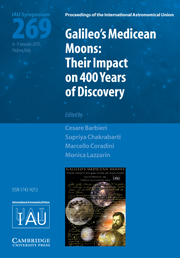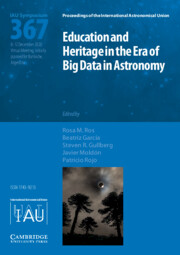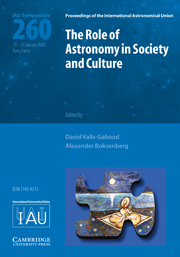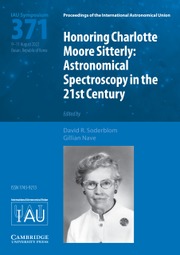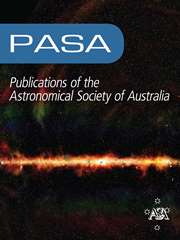Galileo's Medicean Moons (IAU S269)
IAU Symposium 269 celebrates the 400th anniversary of Galileo Galilei's discovery of the Medicean Moons, Jupiter's four largest satellites, exploring the impact his findings have had on science and the humanities. Galileo's instrumental discovery and his belief that the planets and moons in our Solar System could be habitable worlds encouraged a deeper understanding of our place in the Universe. Today, ongoing space missions to Jupiter's moons, our own Moon, Mars, Saturn, and Enceladus, reveal our continued fascination with the possibilities of alien life, but this time with a focus on potential host sites for primitive life forms. These critical reviews examine our present knowledge of the Jupiter system, and consider how future space missions and improvements in telescopes will bolster the contemporary vision of our Solar System, of the many known extrasolar planetary systems, and of life forms beyond the Solar System.
- Presents an overview of Galileo Galilei's astronomical discoveries, explaining how his findings pushed us towards a deeper understanding of our place in the Universe
- Examines our current knowledge of Jupiter and its moons
- Considers how future space missions will bolster our contemporary vision of the Solar System, of extra-solar planetary systems, and of potential life forms beyond our Solar System
Reviews & endorsements
'these critical reviews examine our present knowledge of the Jupiter system and consider how future space missions and improvements in telescopes will bolster the contemporary vision of our Solar system, of the many known extrasolar planetary systems and of life forms beyond the Solar system.' Spaceflight
'This volume is an excellent summary of the scientific history and studies of the Jovian system, and a reminder of how important Galileo's discovery was in shaping our present-day view of the Universe.' The Observatory
Product details
March 2011Hardback
9780521195560
296 pages
252 × 178 × 16 mm
0.7kg
150 b/w illus. 20 tables
Available
Table of Contents
- Preface
- 1. Galileo's telescopic observations: the marvel and meaning of discovery George V. Coyne, S. J.
- 2. Popular perceptions of Galileo Dava Sobel
- 3. The slow growth of humility Tobias Owen and Scott Bolton
- 4. A new physics to support the Copernican system. Gleanings from Galileo's works Giulio Peruzzi
- 5. The telescope in the making, the Galileo first telescopic observations Alberto Righini
- 6. The appearance of the Medicean Moons in 17th century charts and books. How long did it take? Michael Mendillo
- 7. Navigation, world mapping and astrometry with Galileo's moons Kaare Aksnes
- 8. Modern exploration of Galileo's new worlds Torrence V. Johnson
- 9. Medicean Moons sailing through plasma seas: challenges in establishing magnetic properties Margaret G. Kivelson, Xianzhe Jia and Krishan K. Khurana
- 10. Aurora on Jupiter: a magnetic connection with the Sun and the Medicean Moons Supriya Chakrabarti and Marina Galand
- 11. Io's escaping atmosphere: continuing the legacy of surprise Nicholas M. Schneider
- 12. The Jovian Rings Wing-Huen Ip
- 13. The Juno mission Scott J. Bolton and the Juno Science Team
- 14. Seeking Europa's ocean Robert T. Pappalardo
- 15. Europa lander mission: a challenge to find traces of alien life Lev Zelenyi, Oleg Korablev, Elena Vorobyova, Maxim Martynov, Efraim L. Akim and Alexander Zakahrov
- 16. Atmospheric moons Galileo would have loved Sushil K. Atreya
- 17. The study of Mercury Louise M. Prockter and Peter D. Bedini
- 18. Jupiter and the other giants: a comparative study Thérèse Encrenaz
- 19. Spectroscopic and spectrometric differentiation between abiotic and biogenic material on icy worlds Kevin P. Hand, Chris McKay and Carl Pilcher
- 20. Other worlds, other civilizations? Guy Consolmagno, S. J.
- 21. Concluding remarks Roger M. Bonnet
- Posters
- Author index
- Object index.

